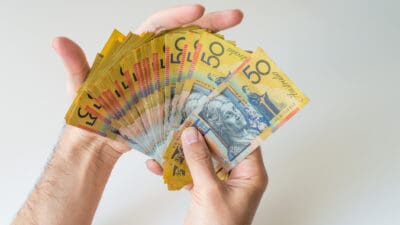Dollar-cost averaging (DCA) is a popular method of investing in ASX shares. It involves investing a set amount of capital at a determined time period, say $100 every week or $1,000 a month, and sticking to it, regardless of what is happening in the markets.
By capturing the various fluctuations of the market over a given time, dollar-cost averaging can give you an 'average' of the overall market's performance, thus eliminating the risk of making a large purchase at a suboptimal price.
But using a DCA strategy does have its fair share of critics. By definition, this strategy discourages trying to time a buy. Thus, if you follow a DCA, you might be unable to capitalise on a market crash by buying large amounts of shares at historically low prices: that is, 'buy low, sell high'.
So is a DCA strategy a good idea, or something that you should avoid?
Dollar-cost averaging: pros and cons
In my view, DCAs are best suited to investors who struggle with the emotional burdens that investing can bring. Everyone knows the best time to buy anything is when it is 'on sale'. And that's exactly what usually happens in a market crash.
For example, the market viewed mining giant BHP Group Ltd (ASX: BHP) as worth more than $41 a share back in February. In the midst of the March share market crash, the market at one point decided BHP was worth only $25.20. Today (at the time of writing), it has revised that valuation back up at $38.28. Clearly, there was some irrational selling going on, as one company (especially one as large as BHP) cannot possibly be truly worth 50% more today than it was just 5 months ago.
Now, we all know the best time to buy BHP shares in 2020 was on the day they were trading at $25.20. But in the heat of the moment, it is extremely difficult for many investors to pull the trigger when there is fear and panic all around (as there was back in March). "What if it drops lower from here and I lose even more money?" they might ask. Or, "What if I can get another 10% off tomorrow?" Remember, a market's lowest point is only painfully obvious in hindsight.
It's precisely because of these emotional roadblocks that many investors will be better off with a DCA. It simply takes this emotional pressure out of the game.
Foolish takeaway
So which is the best strategy? Dollar-cost averaging, or stockpiling your funds until the market tanks?
Well, it really depends on your temperament as an investor. You can always try a 'hybrid approach' of setting aside 10%, 20% or 30% of your portfolio in cash to be put to work during a market crash, and employing a DCA strategy when you hit that threshold for the rest of the time.
There is no right answer here, just what works best for you.








